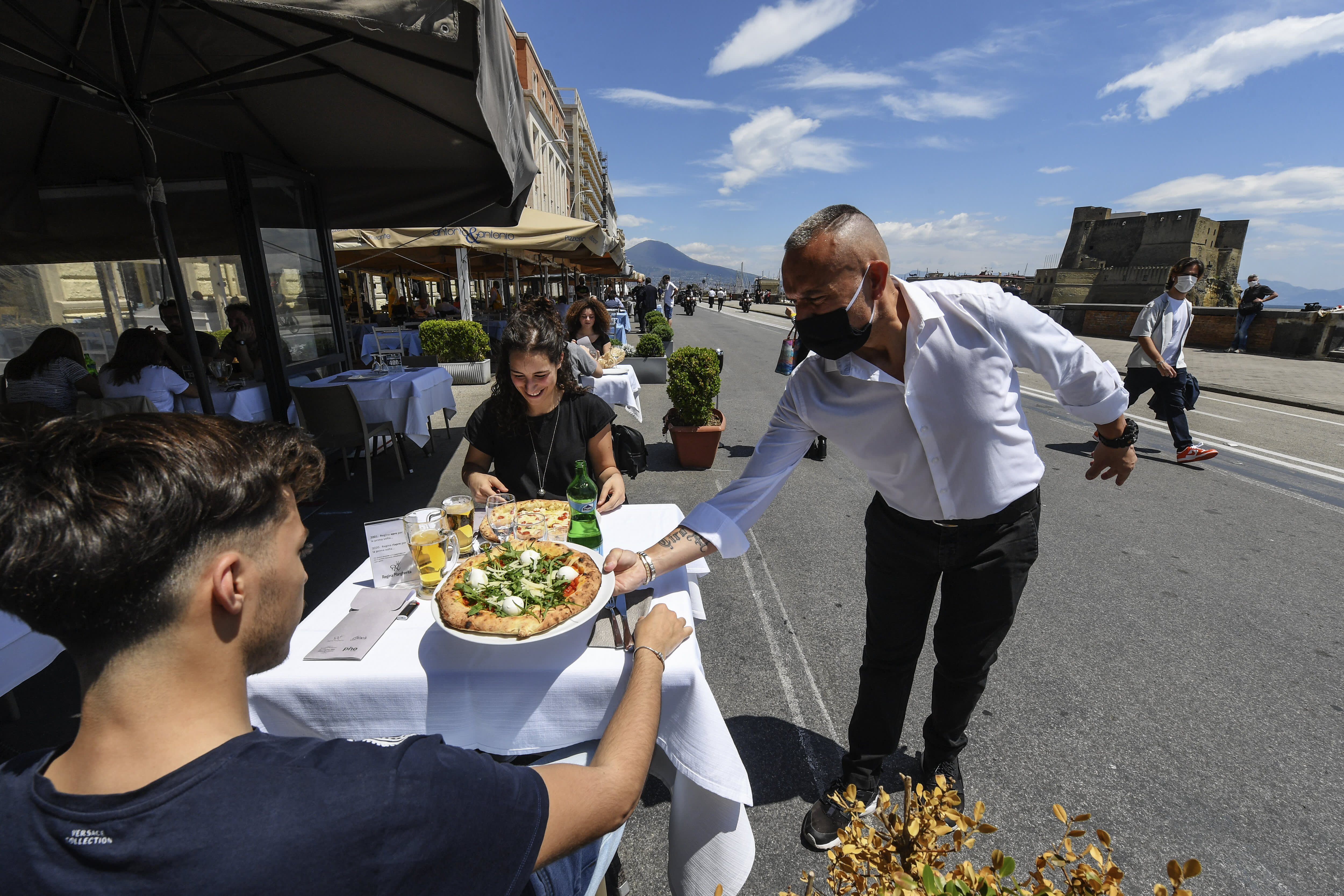
A worker wearing a protective face mask serves clients pizza on the waterfront in Naples.
KONTROLAB | LightRocket | Getty Images
Italy experienced a massive economic shock from the coronavirus pandemic, but its prospects now look much rosier with economists praising the work of Prime Minister Mario Draghi for much of this new economic stability.
“There is a boss and a sense of direction,” Gilles Moec, group chief economist at AXA Investment Managers, told CNBC on Thursday.
Draghi was sworn in as prime minister of Italy almost a year ago, in February 2021, to lead a government comprised of politicians from different parties, and some technocrats.
His aim was to provide stability to the nation at a time when mainstream politicians could not agree on how to invest their EU recovery funds and mitigate the economic shock from the pandemic.
And he has achieved it, according to economists.
“In 2021, Italy did pretty well,” Moec said.
Though part of the growth was a “mechanical catch up” after the deep shock of 2020, there was also a “genuine improvement,” he added.
The final GDP (gross domestic product) readings for 2021 are only due next month. But quarterly data does point to an economic rebound in Italy throughout last year.
This is despite the appearance of the highly-infectious omicron variant, a new strain of Covid discovered in late November, which led to a subsequent tightening in social restrictions.
“Notwithstanding a services deceleration, quarterly growth in [the fourth] quarter should have been sufficient to ensure an average GDP growth reading of 6.3% in 2021,” Paolo Pizzoli, senior economist at ING, said in a research note Thursday, following the release of strong industrial production data.
How has he achieved it?
Economists say the available data does not yet fully reflect the improvements, as there is a certain time lag between policy implementation and economic impact.
However, there are two main structural reforms and one key factor that have alleviated some of the economic pressures during Draghi’s term so far, Guidogiorgio Bodrato, economist at Berenberg, told CNBC Thursday.
He cited the judicial reform — approved in September and which could improve Italy’s attractiveness to foreign investors — and changes to the public administration to speed up its efficiency.
“He was instrumental in securing the recovery money from Europe,” Bodrato also said about Draghi’s work.
Draghi’s first main task as prime minister was to put together a plan on how the country would be using the EU’s funds, which total 191.5 billion euros ($216.68 billion). The plans were then approved by European institutions. Disbursements of the funds could only have taken place after the completion of these key reforms.
“Draghi’s most important economic achievement has been the drafting of the [recovery] plan: a multi-year detailed commitment to investments and reforms which will have to be followed by any government from here until 2026,” Luca Pennarola, European economist at BNP Paribas, said via email.
“This means that whichever government comes into power in the next few years will have to follow Draghi’s script in order to ensure access to the EU funds,” he added.
The challenges ahead
Now that Italy is about to choose a new president, with elections later this month, there are question marks about whether this economic stability and performance could somehow be undermined.
This is because Draghi himself is among the candidates for the presidential job, which would open the door to a new prime minister and, potentially, to snap elections. The president’s role is largely ceremonial in Italy while the real power lies with the prime minister.
Despite the improvements, Italy is “still in a complicated position,” Moec said.
He noted that with interest rates expected to go up this year, it could be increasingly more expensive for the Italian government to tap the markets to aid its recovery.
This is a significant problem given that Italy has one of the highest debt piles in Europe.
“The final judgement will be how fast they spend the money from the EU,” Moec added.
In addition, the current government has an expiration date in 2023 with new legislative elections due. So the question of who will replace Draghi, if not imminent in the wake of the presidential vote, will inevitably resurface again a couple of months down the line.
In the meantime, there are already some signs of friction within the ruling government. This includes the lack of unanimity over the need to introduce compulsory vaccinations in Italy.




